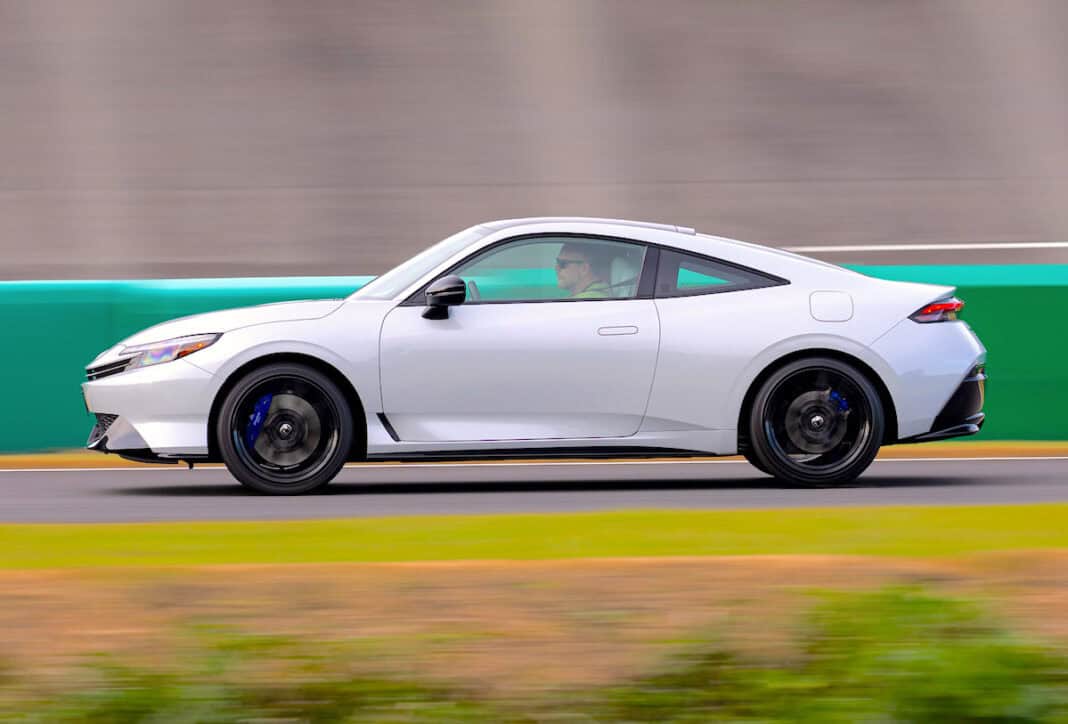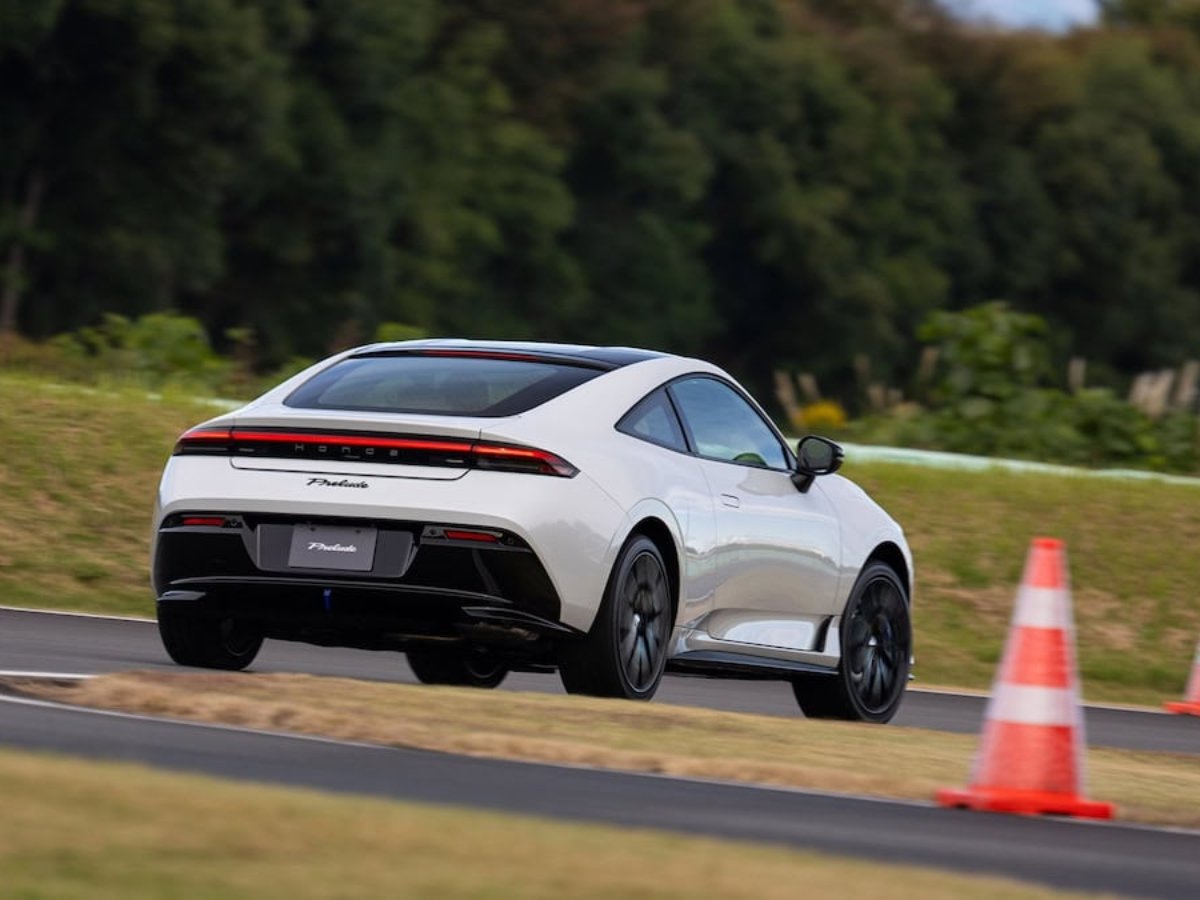It’s easy to dismiss the new 2026 Honda Prelude as just a coupe version of the Civic hybrid. After all, its hardware is all Civic and its hybrid powertrain is a familiar unit at Honda. It’s also a front-wheel-drive compact that’s paired with an automatic transmission. None of that really speaks to enthusiasts.
And it’s totally understandable that so much emotion, and so much opinion surrounds this car. After all, the Prelude, which makes a comeback after a 25-year hiatus, was a 1980’s and 1990’s darling. Over five generations, Honda’s sports coupe always showcased the automaker’s latest technology, while taking on fierce competition during an era when the sports coupe was a boiling segment. Its return, therefore, comes with high expectations.
Related – Inside the New Honda Prelude: Where Nostalgia Meets Next-Gen Design
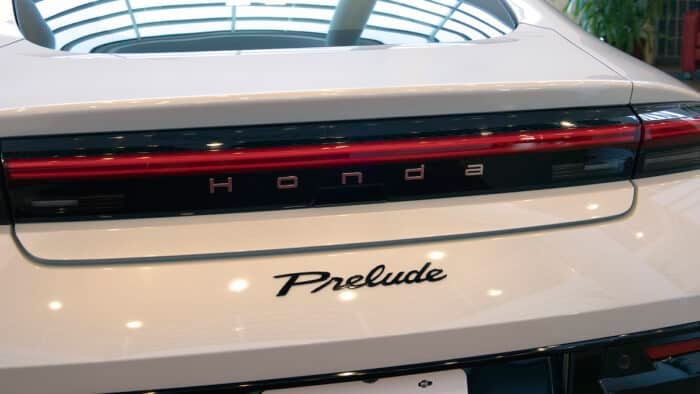
In today’s world that’s dominated by trucks and SUVs and where even sedans are suffering from a sales standpoint, why on Earth should anybody care about a Prelude, especially one that has no manual transmission?
…It feels like a naturally aspirated four-cylinder paired with a dual-clutch automatic, similar to what the old Acura ILX used to feel like.
Well, I was among one of the lucky journalists to drive the new Prelude at Honda’s own test track in Tochigi, Japan. Turns out its drivetrain is nothing to worry about, as Honda somehow managed to bake one of the most driver-focused sports cars this side of a Civic Type R.
Proof That a Sports Car Isn’t Defined by Its Powertrain

On paper, the Prelude has absolutely nothing to get an enthusiast’s pulse running, yet, Honda says the car was designed specifically for “the joy of driving”, and that it’s poised to take on cars like the Mazda MX-5 Miata and the Subaru BRZ/Toyota GR86 twins. Those are tough cars to beat.
Honda also wants to pit this as a grand tourer; a sports car mostly designed for backroad carving and that also happens to be easy to live with daily.
Related – Honda’s Top 10 Sports Cars That Set the Standard
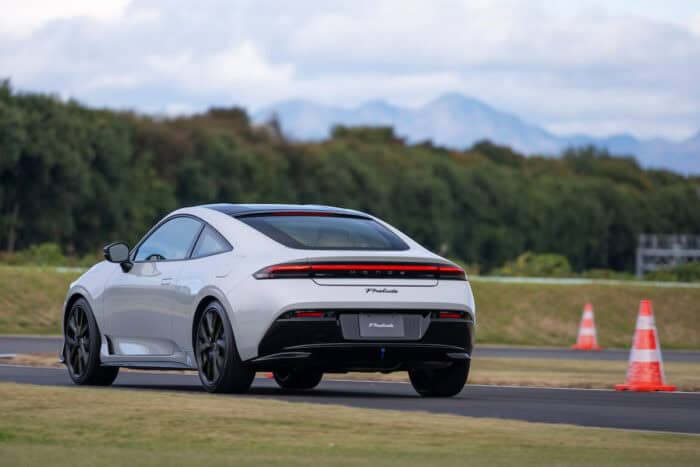
But the moment I threw the Prelude into the test track’s first apex, I realized that this really is a machine that’s much more than the sum of its parts, and further proof that a great sports car isn’t defined by its horsepower and torque, but rather how it makes you feel from behind the wheel.
The system (S+ Shift) can even simulate the compression effect of a manual transmission upon downshifts and replace a limited-slip differential by creating torque vectoring.
The Prelude is precise, reactive, communicative and oh-so capable around a tight, autocross-style track like the one Honda had prepared for us. That’s because, while the car rides on the same platform as the Civic (as well as the Accord and Acura Integra), its entire front section is taken straight out of the Civic Type R. This includes its cross-member, suspension geometry, dampers, brakes and even Honda’s trick dual axis suspension technology designed to mitigate torque steer.
The result is a car that gracefully carves its way through corners, with a tight chassis and responsive reflexes. Yes, the Prelude is a true driver’s car.
It Quickly Makes You Forget it’s a Hybrid
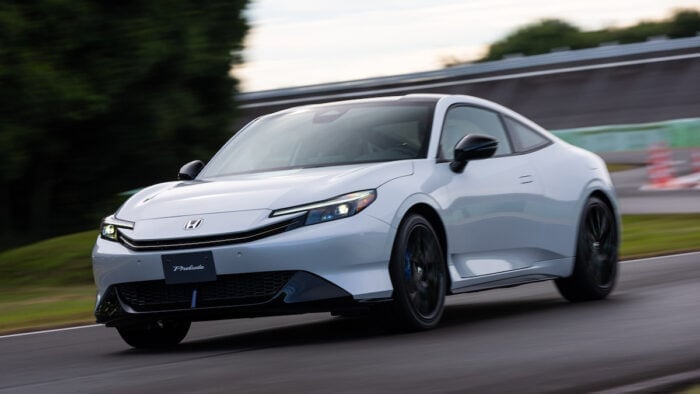
- Powertrain: 2.0-L Atkinson-cycle 4-cylinder + dual-motor hybrid (e-CVT)
- Combined Output: 200 hp / 232 lb-ft of torque
- Drivetrain: Front-wheel drive with dual-axis front suspension (from Civic Type R)
- Transmission: Honda S+ Shift electronic CVT with simulated 8-speed manual control
More importantly, the way the Prelude feels will quickly have you forgetting that it’s a hybrid paired with what is essentially a very sophisticated CVT, or what Honda calls S+ Shift technology.
The main internal combustion engine is a 2.0-liter unit shared with other vehicles at Honda, such as the Civic, Accord and CR-V hybrid. It’s then paired to a two-motor hybrid setup, where one electric motor acts mostly as a generator to power the car’s accessories, or assist the gas engine under load, while the other essentially replaces the transmission. Total combined output is rated at 200 horsepower and 232 lb-ft of torque.
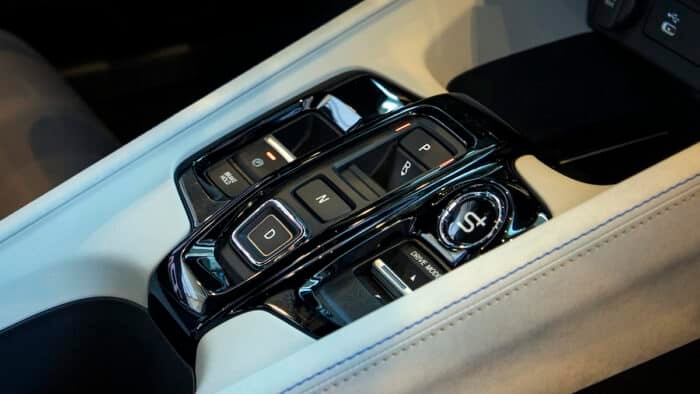
How Honda’s S+ Shift Redefines the Hybrid Drive
Behind S+ Shift is what Honda calls an electronic CVT because it remains a continuous setup in the sense that it constantly changes its ratio on the fly. This makes it quicker than any automatic, including dual-clutch units. But it deletes the mechanical components of traditional continuously variable transmissions, like the belt and pulley. The result, Honda says, is a quicker-reacting and linear setup, one that gets rid of the dreadful elastic feel we normally associate with CVTs.
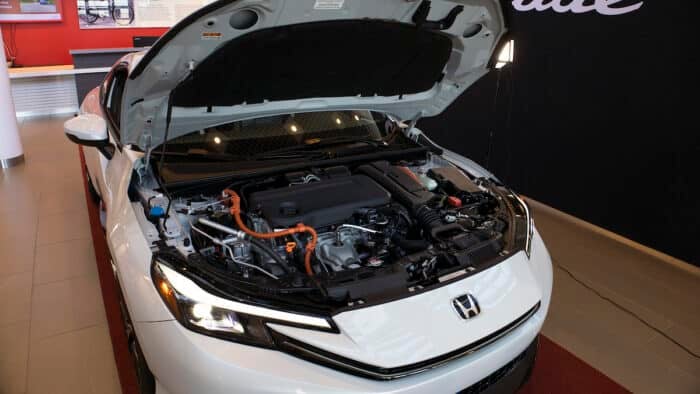
S+ Shift also has the ability to simulate eight forward gears, which can be manually controlled via steering wheel-mounted paddles. The system can even simulate the compression effect of a manual transmission upon downshifts and replace a limited-slip differential by creating torque vectoring. On top of all that, Honda engineered a pumped-in audio system that mimics the sounds of a naturally aspirated four-cylinder.
Takeaway: Fun Comes First and Honda Knows It
The result? A totally organic driving experience that immediately has you forgetting you’re driving a hybrid with an automatic transmission. From behind the wheel, the Prelude, rather, feels like a naturally aspirated four-cylinder paired with a dual-clutch automatic, similar to what the old Acura ILX used to feel like.
In other words, it’s fun to drive, which, at the end of the day, is what you want from a sports car. The beauty of Honda’s system is that the Prelude will remain very cheap to run thanks to its hybrid powertrain and should remain friendly to the environment.
And since this is a front-wheel-drive coupe fitted with a hatchback design, the Prelude offers much more cargo space than, say, a Subaru BRZ. In other words, the 2026 Honda Prelude is a sports coupe for the modern age: frugal, kind to the environment and actually usable for the everyday grind. It also proves that the way a sports car makes you feel is much more important than what’s actually hiding underneath its hood.

